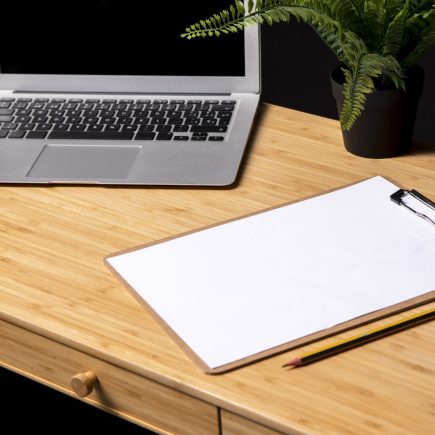
Shrink wrapping is a reliable way to protect outdoor furniture from harsh winter weather. It creates a tight, waterproof seal that shields against snow, ice, wind, and UV damage. This method is especially useful if you store your furniture outside and want better protection than standard covers. With the right materials and a few simple steps, you can shrink wrap your patio furniture at home and keep it in excellent condition until spring.
Materials Needed

- Shrink wrap film (7–8 mil polyethylene): Choose UV-resistant and cold-crack resistant film designed for outdoor use.
- Heat gun or propane torch: Used to evenly shrink the wrap and create a tight, weatherproof seal.
- Perimeter strapping: Holds the wrap securely at the base of the furniture bundle during the heating process.
- Shrink tape: Seals seams, secures overlaps, and repairs any small tears in the film.
- Air vents: Allow trapped moisture to escape and prevent condensation inside the wrapped area.
- Gloves and goggles: Provide essential protection when using heat tools.
- Desiccant packs (optional): Help absorb humidity inside the wrap for added moisture control.
Estimating Wrap Size
Measure length × width × height of your furniture bundle.
Formula:
Wrap Area = 2(L×H + W×H) + L×W
Add 10–15% extra for overlaps
| Furniture Set | Estimated Wrap Needed |
| Bistro Set (2 chairs + small table) | 8–10 m² |
| Dining Set (6 chairs + table) | 16–18 m² |
| Sectional Sofa | 22–26 m² |
Step-by-Step Instructions: How to Shrink Wrap Patio Furniture
Step 1: Preparation Is Key
Before applying the wrap, thorough prep will ensure longevity and prevent damage.
- Clean the furniture with mild soap and water. Let everything dry completely.
- Remove cushions, textiles, or umbrellas and store them indoors.
- Stack or group the furniture tightly to minimize the area to cover.
- Pad sharp edges or corners with foam or cardboard.
- Clear your workspace and make sure there’s 1–2 metres of open space around the bundle.
- Never shrink wrap furniture that is even slightly damp trapped moisture will cause mold or rust.
Step 2: Drape the Shrink Wrap
Unroll and lay the shrink wrap loosely over the furniture bundle. Start from one end and drape it across the top, allowing the sides to hang evenly.

- Leave 30–50 cm of extra film on each side to fold under or overlap.
- Ensure full coverage from all angles.
- If needed, use multiple pieces of wrap and overlap them by 10–15 cm.
Step 3: Secure the Bottom with Strapping
Use your perimeter strapping to wrap around the base of the furniture. This will prevent the wrap from shifting when you begin applying heat.
- Place the strap about 10 cm from the ground.
- Tighten it snugly but not so tight that it cuts into the film.
- If your furniture sits on wheels or legs, wrap the strap above them.
Step 4: Seal with Shrink Tape
Before heating, secure all seams and overlaps with shrink wrap tape.

- Apply tape along every seam, edge, or area where multiple sheets of film meet.
- Pay special attention to corners, vents, or potential weak points.
- Smooth out bubbles or wrinkles as much as possible to ensure a tight seal later.
Step 5: Apply Heat to Shrink the Film
Now the fun (and critical) part shrinking the film:

- Start at the bottom edge and work your way upward.
- Hold the heat tool 30–45 cm from the wrap.
- Move the gun in smooth, sweeping motions. Never linger on one spot.
- As the film heats, it will tighten and conform to the shape of your furniture.
- Watch for any signs of overheating, such as melting or bubbling.
- Use extra caution around glass, wicker, or painted surfaces. You can cover these areas with cardboard as a heat buffer.
Step 6: Install Air Vents
Before completely sealing the wrap, install vents:

- Place 1 vent per square metre of surface area.
- Vents prevent condensation buildup and allow air circulation.
- Apply the self-adhesive vents on vertical sides, not the top.
Step 7: Final Touches and Inspection
After the wrap has fully shrunk and vents are in place, inspect your work:
- Look for thin spots, loose edges, or open seams.
- Reinforce weak points with extra tape or reheating.
- The wrap should be smooth, tight, and sealed all around.
- No part of the furniture should be exposed to the elements.
Aftercare & Winter Storage Tips
- Anchor the bundle if it’s in a windy or exposed area. Use sandbags or tie-downs.
- Avoid storing under trees, falling branches or sap can cause damage.
- Don’t place in areas prone to heavy snow accumulation.
- In spring, cut the wrap along a seam with scissors and peel it away.
- Dispose or recycle the wrap if local facilities accept LDPE plastic.
Best Time to Shrink Wrap
Timing is just as important as the method when it comes to shrink wrapping outdoor furniture. The ideal window is typically:
- Mid to late autumn, before temperatures drop below freezing consistently
- The weather is still mild enough for heat tools to work efficiently
- Shrink wrap materials and supplies are still readily available in stores
- Furniture has had time to dry thoroughly after regular outdoor use in the warmer months
In most regions, this means wrapping between late September and early November, depending on local climate. Aim to wrap before the first frost, but after you’ve finished using your patio setup for the season.
Cost Breakdown
| Option | Estimated Cost |
| DIY Shrink Wrap | Low |
| Fitted Covers | Medium |
| Professional Shrink Wrapping | Medium–High |
| Indoor Storage | High |
DIY shrink wrapping offers the lowest-cost solution while still providing excellent protection. With minimal recurring expenses and reusable tools, it remains one of the most economical ways to safeguard your outdoor furniture over winter.
Safety Guidelines
Shrink wrapping involves high heat and flammable materials. Follow these safety precautions:
- Always wear gloves and goggles to protect your hands and eyes.
- Keep the heat gun moving to prevent burning the wrap or furniture.
- Never use a propane torch near flammable materials, indoors, or in enclosed spaces.
- Cover glass and delicate surfaces with cardboard before heating.
- Never attempt to wrap in windy or rainy conditions.
- Have a fire extinguisher nearby if using a propane heat tool.
Shrink wrapping Patio Furniture is an excellent way to prolong the life of your outdoor pieces through Canada’s harsh winter. With proper preparation, the right tools, and a little patience, you can complete the entire process in an afternoon. The result is a snug, weatherproof cocoon that protects your investment and gives you peace of mind until springtime.
Whether you’re wrapping a small bistro set or a large sectional, this DIY solution offers professional-grade results without the professional price tag. Done correctly, your furniture will emerge in April looking just as good as it did in October.
FAQs
1. How long does shrink wrap last?
Shrink wrap can last anywhere from a few months to a year, depending on exposure to sunlight and environmental factors. For long-term outdoor use, you may need to replace it periodically.
2. What can I use instead of shrink wrap?
Alternatives to shrink wrap include moving blankets, furniture covers, or plastic sheeting. These can offer similar protection against dust and moisture, though they may not be as tight or secure as shrink wrap.
3. Will shrink wrap damage furniture?
Shrink wrap is generally safe for furniture when applied correctly. However, if applied too tightly or left on for long periods, it can cause pressure marks or even damage delicate finishes.






















